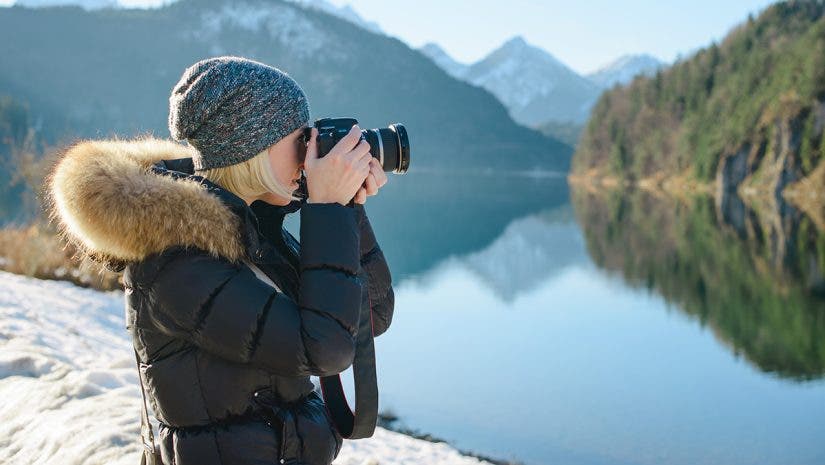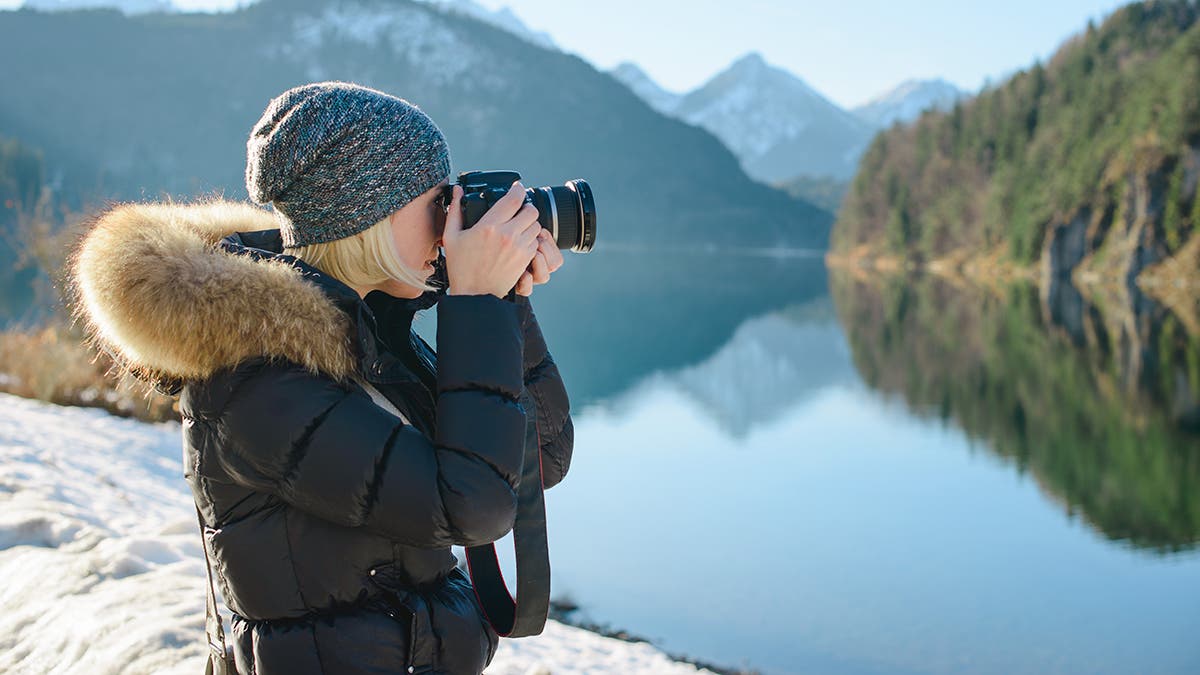Looking for the best cameras for beginners? Look no further than this list! The best camera for beginners is one that is easy to use. Additionally, it will help you swap lenses quickly and can grow as you develop. Any of the cameras below are perfect for a beginner. However, if you want to know our criteria, check out How to Choose the Best Camera for Beginners.
If you’re looking to buy a new camera, put this lineup in your field of focus. Loved by enthusiasts and professionals globally, Canon, Nikon, Sony, Panasonic, Fujifilm, and OM System offer many types of cameras that are portable and compact. You’re guaranteed the freedom to create with these lightweight, easy-to-use models that deliver your desired image quality.
Best Cameras for Beginners
Canon EOS RP
Why We Chose This Camera as One of the Best Cameras for Beginners
The EOS RP is notably user-friendly and sports a full-frame sensor. It delivers superior image quality and makes it a seamless experience for beginner photographers. All this while ensuring no visual detail is compromised.
Key Features:
- Type: Mirrorless
- Sensor: Full Frame
- Megapixel: 26.2 megapixels
- Screen Finder Type: 3.0″ Vari-Angle Touchscreen LCD
- Max Video Resolution: 4K UHD up to 25fps
The Canon EOS RP is a compact, lightweight, mirrorless camera. It provides an excellent stepping stone for beginners transitioning from smaller sensors to full-frame photography. Its intuitive interface and superior image quality, thanks to a 26.2-megapixel full-frame sensor, make it an appealing choice for those looking to upgrade from entry-level APS-C models like the Canon EOS R100. Despite its beginner-friendly design, it doesn’t skimp on advanced features. The EOS R100 offers impressive performance with Dual Pixel CMOS autofocus, DIGIC 8 Image Processor, and the ability to capture 4K UHD video up to 25fps.
Compared to the higher-end models in Canon’s R lineup, like the EOS R5 and R6 Mark II, the EOS RP provides an attractive balance of cost and functionality. It has an excellent battery life, a vari-angle touchscreen LCD, and compatibility with RF as well as EF and EF-S lenses with an adapter. While it may lack some of the professional video features in the R5 and R6 Mark II, its user-friendly nature and superb image quality make the EOS RP an excellent choice for the beginner looking to explore full-frame photography.
Nikon Z50
Why We Chose This Camera as One of the Best Cameras for Beginners
The Z50 is compact, lightweight, and equipped with a robust APS-C sensor, enabling beginners to capture high-quality photos and videos during their travels without a hefty camera setup.
Key Features:
- Type: Mirrorless
- Sensor: APS-C
- Megapixels: 20.9 megapixels
- Screen Finder Type: 3.2″ Tilting Touchscreen LCD
- Max Video Resolution: 4K UHD up to 30fps
With its robust 20.9-megapixel APS-C sensor, the Nikon Z50 is a very good stills camera that is capable of producing great images. With its 4K UHD video capability, the Nikon Z50 consistently delivers for photographers and videographers thanks to its small size. The combination of these two factors combined with the EXPEED 6 image processor gives the camera fast performance and excellent low-light capabilities. This makes it a perfect camera for travelers.
There is no doubt that the Z50 is an excellent choice for those who like taking pictures. This is because of its intuitive touchscreen interface and sturdy, comfortable grip, both of which make using the camera a pleasure. Additionally, it has an electronic viewfinder that allows you to frame your shots accurately and a tilting LCD screen to accommodate different shooting angles. In my opinion, these features make the Z50 an excellent option for travel photographers and vloggers who want an easy-to-use, high-performance camera that isn’t overly heavy.
Sony ZV-1 II
Why We Chose This Camera as One of the Best Cameras for Beginners
The ZV-1 II comes with rapid autofocus, built-in stabilization, and a compact design, allowing vloggers and content creators to capture stable, 4K footage on the move.
Key Features:
- Type: Compact Vlogging Camera
- Sensor: 1-inch
- Megapixels: 20.1 Megapixels
- Screen Finder Type: 3.0″ Vari-angle Touchscreen LCD
- Max Video Resolution: H.264/MPEG-4 AVC 4:2:0 8-Bit
The Sony ZV-1 II is a compact camera designed with vloggers and content creators in mind. Equipped with a 20.1-megapixel 1-inch sensor and advanced imaging technology, the ZV-1 II delivers crisp, clear images and stunning H.264/MPEG-4 AVC 4:2:0 8-Bit or 4K UHD video, ideal for streaming, YouTube, or other creative pursuits.
Beyond its impressive performance, the ZV-1 II also features design elements tailored to the needs of vloggers. The vari-angle touchscreen LCD enables easy selfie shooting, while the compact size makes it ideal for on-the-go content creation. Add to this the in-built image stabilization, and you’ve got a versatile and capable tool for capturing high-quality content anytime, anywhere.
Fujifilm X-S20
Why We Chose This Camera as One of the Best Cameras for Beginners
The X-S20 features exceptional color rendering and a sleek vintage design, providing those new to street and lifestyle photography a perfect combination of aesthetic appeal and performance.
Key Features:
- Type: Mirrorless
- Sensor: APS-C
- Megapixels: 26.1 megapixels
- Screen Finder Type: 3.0″ Tilting Touchscreen LCD
- Max Video Resolution: H.264 ALL-Intra/H.264
This powerhouse hybrid mirrorless camera combines a retro aesthetic with advanced imaging and video capabilities. It boasts a 26.1-megapixel APS-C sensor, which, paired with the X-Processor 4, delivers rich color rendering and outstanding image quality. In addition, the X-S20 can shoot stunning 4K videos, making it a versatile choice for various creative endeavors.
This camera is a great fit for beginners who value design as much as performance. The X-S20’s tactile controls and simple menus make it easy to use, while the magnesium alloy body provides a durable, premium feel. Its classic look might be reminiscent of traditional film cameras, but it’s high-performance capabilities and easy-to-use interface make it an ideal tool for the modern photographer.
Panasonic Lumix GH5 II
Why We Chose This Camera as One of the Best Cameras for Beginners
The GH5 II offers powerful video capabilities, including 4K/60p recording and pre-installed V-LogL, giving budding filmmakers an all-in-one tool for capturing high-quality videos and still images.
Key Features:
- Type: Mirrorless
- Sensor: Micro Four Thirds
- Megapixels: 20.3 megapixels
- Screen Finder Type: 3.2″ Free-Angle Touchscreen OLED
- Max Video Resolution: H.265/MOV 4:2:0 10-Bit
The Panasonic Lumix GH5 II is a feature-packed mirrorless camera with outstanding video capabilities, making it an ideal choice for beginners aiming to delve into professional video shooting. With a 20.3-megapixel Micro Four Thirds sensor and an updated Venus Engine processor, the GH5 II provides exceptional image quality and superior performance, marking a clear upgrade from the entry-level G-series models like the G95.
Compared to the higher-end S-series cameras, like the LUMIX S5IIX the GH5 II provides a more affordable and compact option yet still excels in video performance. With features like 4K video recording up to 60fps, V-LogL pre-installed, and in-body image stabilization, the GH5 II is a video creation powerhouse. While it may not have the full-frame sensor of the S-series, its impressive video specs and user-friendly design make the GH5 II an ideal choice for novice filmmakers seeking high-quality video in a compact form.
Olympus OM-D E-M10 Mark IV
Why We Chose This Camera as One of the Best Cameras for Beginners
The E-M10 Mark IV is compact, features in-body image stabilization, and has an intuitive interface, making it a reliable choice for beginners photographing various scenes, from portraits to landscapes.
Key Features:
- Type: Mirrorless
- Sensor: Micro Four Thirds
- Megapixels: 20.3 megapixels
- Screen Finder Type: 3.0″ Tilting Touchscreen LCD
- Max Video Resolution: 4K UHD up to 30fps
The Olympus OM-D E-M10 Mark IV is a mirrorless camera that proves good things come in small packages. It’s compact size and light weight make it easy to take on the go, yet it’s packed with features that beginners will appreciate. When first using the camera, you’ll notice the 20.3-megapixel Micro Four Thirds sensor delivers excellent image quality, while the in-body image stabilization helps ensure sharp images and smooth videos.
Furthermore, the E-M10 Mark IV offers an intuitive touch interface and easily accessible controls that make it easy for beginners to navigate. The addition of 4K UHD video capabilities adds to its versatility, making it a great choice for various shooting conditions. Whether you’re capturing beautiful landscapes, fast-moving sports, or candid moments, the E-M10 Mark IV is a reliable companion for any beginner photographer.
Nikon Z fc
Why We Chose This Camera as One of the Best Cameras for Beginners
The Z fc merges a nostalgic aesthetic with modern functions, offering beginners a stylish and straightforward camera that excels in photography and video.
Key Features:
- Type: Mirrorless
- Sensor: APS-C
- Megapixels: 20.9 megapixels
- Screen Finder Type: 3.0″ Vari-angle Touchscreen LCD
- Max Video Resolution: 4K UHD up to 30fps
There’s something special about Nikon’s Z fc camera. It blends modern performance with vintage charm. This popular camera has a 20.9-megapixel APS-C sensor that provides superb image quality and 4K UHD video. In addition, the EXPEED 6 image processor ensures high-speed performance, exceptional detail, and stunning color reproduction, making it a winning combination for many photographers.
With its old-school aesthetics, the Z fc is more than just a nod to Nikon’s film camera era, it is a true classic. In addition to its tactile controls and easy-to-use dials, the touchscreen LCD display offers a variety of shooting options, allowing you to compose a variety of shots from various perspectives. It doesn’t matter if you’re a beginner trying out photography or if you’re a vlogger seeking a camera that stands out, the Nikon Z fc is a versatile and stylish camera to choose from.
Fujifilm X-T30 II
Why We Chose This Camera as One of the Best Cameras for Beginners
The X-T30 II provides rapid autofocus, superior image quality, and a compact frame, making it an excellent choice for aspiring hybrid shooters who need a compact camera without sacrificing performance.
Key Features:
- Type: Mirrorless
- Sensor: APS-C
- Megapixels: 26.1 megapixels
- Screen Finder Type: 3.0″ Tilting Touchscreen LCD
- Max Video Resolution: 4K UHD up to 30fps
As a result of the X-T30 II’s compact design as well as its high-performance features, the camera offers an ideal combination of high-speed performance and stunning image quality in a portable package. The camera features a 26.1MP APS-C sensor and the X-Processor 4, providing high-speed performance and stunning image quality in one compact package.
The X-T30 II is also designed with usability in mind. With its touchscreen LCD, a quick and precise autofocus system, and intuitive, customizable controls, even beginners will find it easy to use. In the case that you are a growing photographer looking for your very first DSLR, or a vlogger looking for a reliable camera for capturing 4K UHD footage, the Fujifilm X-T30 II can be an excellent choice that doesn’t compromise on performance or portability.





